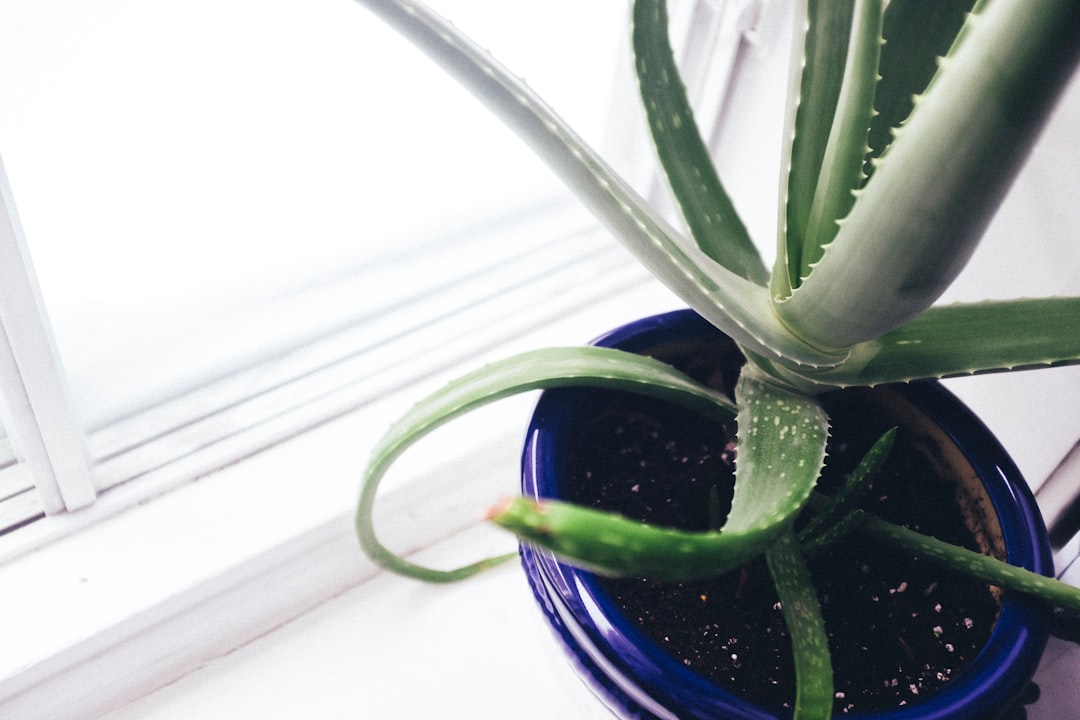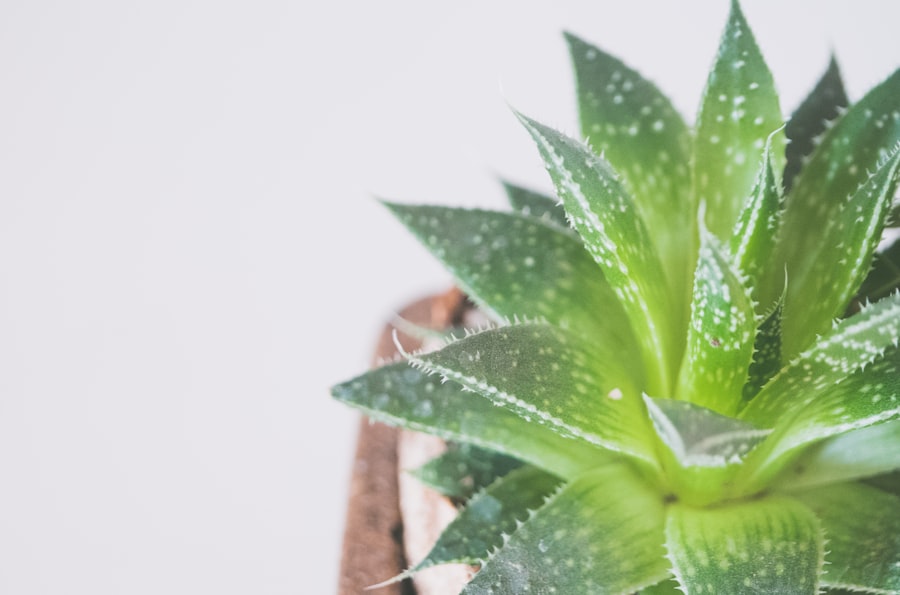Watering Your Aloe: Tips for Healthy Growth

Proper watering is essential for the health and well-being of aloe plants. Aloe plants, also known as Aloe vera, are succulents that are native to arid regions. They have adapted to survive in dry conditions by storing water in their leaves, making them drought-tolerant plants. However, this does not mean that they can survive without any water at all. Finding the right balance of watering is crucial to ensure the optimal growth and vitality of your aloe plant.
Key Takeaways
- Aloe plants require well-draining soil and containers to prevent waterlogging.
- Overwatering can lead to root rot, while underwatering can cause the leaves to wilt and turn brown.
- Water aloe plants deeply but infrequently, allowing the soil to dry out between waterings.
- Different seasons and container types may require adjustments in watering frequency and amount.
- Rainwater and distilled water are ideal for aloe plants, as tap water may contain chemicals that can harm them.
Understanding the Watering Needs of Your Aloe Plant
Several factors can affect the watering needs of your aloe plant. One of the most important factors is the climate and environment in which your plant is located. Aloe plants thrive in warm and dry conditions, so if you live in a humid or cold climate, you may need to adjust your watering routine accordingly.
Another factor to consider is the size of your aloe plant and its root system. Larger plants with more extensive root systems will require more water than smaller plants. Additionally, the type of soil and its ability to retain moisture will also impact how often you need to water your aloe plant.
To determine when your aloe plant needs watering, you can use the “finger test.” Stick your finger about an inch into the soil near the base of the plant. If it feels dry, it’s time to water your aloe plant. If it feels moist, you can wait a few more days before watering again.
The Importance of Proper Drainage for Aloe Plants
Proper drainage is crucial for aloe plants because they are susceptible to root rot if their roots sit in water for too long. Aloe plants prefer well-draining soil that allows excess water to flow out easily. Without proper drainage, the roots can become waterlogged and start to rot, leading to the death of the plant.
To ensure good drainage for your aloe plant, you can use a pot with drainage holes at the bottom. This allows excess water to escape and prevents water from pooling at the bottom of the pot. Additionally, you can add a layer of gravel or small rocks at the bottom of the pot to further improve drainage.
How Often Should You Water Your Aloe Plant?
| Factors | Frequency |
|---|---|
| Type of Aloe Plant | Varies |
| Size of Pot | Every 2-3 weeks |
| Type of Soil | Every 3-4 weeks |
| Humidity | Every 2-3 weeks |
| Temperature | Every 2-3 weeks |
| Amount of Sunlight | Every 2-3 weeks |
The frequency of watering your aloe plant will depend on various factors, including the climate, size of the plant, and type of soil. As a general guideline, you should water your aloe plant every two to three weeks during the growing season (spring and summer) and reduce watering frequency to once a month during the dormant season (fall and winter).
However, it’s important to note that these are just general guidelines, and you should always check the moisture level of the soil before watering. Overwatering can be just as harmful as underwatering for aloe plants, so it’s crucial to find the right balance.
Signs of Overwatering and Underwatering Your Aloe Plant
Overwatering and underwatering can both have detrimental effects on your aloe plant. Overwatering can lead to root rot, while underwatering can cause the leaves to become dry and shriveled. It’s important to be able to recognize the signs of these issues so that you can address them promptly.
Signs of overwatering include yellowing or browning leaves, soft or mushy roots, and a foul smell coming from the soil. If you notice any of these signs, it’s important to reduce watering frequency and improve drainage immediately.
On the other hand, signs of underwatering include dry and shriveled leaves, slow growth, and wilting. If you notice these signs, it’s important to increase watering frequency and ensure that the soil is adequately moist.
Best Practices for Watering Aloe Vera in Different Seasons

Watering frequency should be adjusted according to the seasons. During the growing season (spring and summer), aloe plants are actively growing and require more water. You can increase watering frequency to once every two weeks or when the soil feels dry.
During the dormant season (fall and winter), aloe plants enter a period of rest and require less water. You can reduce watering frequency to once a month or when the soil feels dry. It’s important to note that aloe plants can tolerate drought conditions, so it’s better to underwater than overwater during this time.
In extreme weather conditions, such as heatwaves or cold snaps, you may need to adjust your watering routine accordingly. During heatwaves, you may need to water your aloe plant more frequently to prevent dehydration. Conversely, during cold snaps, you may need to reduce watering frequency to prevent the roots from freezing.
Watering Aloe Vera in Different Types of Containers
The type of container you choose for your aloe plant can also affect its watering needs. Clay pots are porous and allow moisture to evaporate more quickly, so you may need to water your aloe plant more frequently if it’s in a clay pot. Plastic pots, on the other hand, retain moisture better and may require less frequent watering.
Regardless of the type of container, it’s important to ensure that there are drainage holes at the bottom to allow excess water to escape. Without proper drainage, the roots can become waterlogged and lead to root rot.
The Role of Soil Type and Composition in Aloe Watering
The type and composition of the soil can significantly impact the watering needs of your aloe plant. A well-draining soil mix is essential for aloe plants because it allows excess water to flow out easily and prevents water from pooling around the roots.
You can create a well-draining soil mix for your aloe plant by combining equal parts of potting soil, perlite, and coarse sand. This mixture provides good aeration and drainage for the roots. Avoid using heavy or compacted soils that retain moisture for too long, as this can lead to root rot.
The Benefits of Using Rainwater and Distilled Water for Aloe Plants
Using rainwater or distilled water for your aloe plant can provide several benefits. Rainwater is naturally soft and free from chemicals such as chlorine or fluoride, which can be present in tap water. This makes it a more natural and gentle option for watering your aloe plant.
Distilled water is also a good option because it has been purified through the process of distillation, which removes impurities and minerals. This ensures that your aloe plant receives clean and pure water without any potentially harmful substances.
To collect rainwater, you can place a container outside during rainfall and use it to water your aloe plant when needed. For distilled water, you can purchase it from stores or use a home distillation system to produce your own.
How to Water Aloe Vera Cuttings and Propagated Plants
When watering aloe vera cuttings or propagated plants, it’s important to be extra careful to avoid overwatering. Cuttings and propagated plants have underdeveloped root systems and are more susceptible to root rot.
To water aloe vera cuttings or propagated plants, you can use the “bottom watering” method. Fill a tray or saucer with water and place the pot containing the cutting or propagated plant in the tray. Allow the plant to absorb water through the drainage holes at the bottom of the pot. Once the topsoil feels moist, remove the pot from the tray and allow any excess water to drain out.
Troubleshooting Common Watering Issues in Aloe Plants
Common watering issues in aloe plants include overwatering, underwatering, and poor drainage. If you notice signs of overwatering, such as yellowing or browning leaves, soft roots, or a foul smell, you should reduce watering frequency and improve drainage immediately.
If you notice signs of underwatering, such as dry and shriveled leaves, slow growth, or wilting, you should increase watering frequency and ensure that the soil is adequately moist.
To address poor drainage, you can repot your aloe plant into a container with drainage holes or add a layer of gravel or small rocks at the bottom of the pot to improve drainage.
Proper watering is crucial for the health and vitality of aloe plants. Understanding the watering needs of your aloe plant, ensuring proper drainage, and adjusting watering frequency according to the seasons are key to maintaining a healthy plant. By recognizing the signs of overwatering and underwatering and addressing these issues promptly, you can ensure the optimal growth and well-being of your aloe plant. Remember to choose the right container and soil mix, consider using rainwater or distilled water, and be mindful when watering aloe vera cuttings or propagated plants. With these tips and best practices, you can enjoy thriving and beautiful aloe plants in your home or garden.
If you’re looking for more information on how to properly water your aloe plant, you might find this article from Lawn World helpful. They provide expert tips and advice on maintaining healthy plants, including aloe. Check out their comprehensive guide on watering techniques and best practices for aloe plants here.
FAQs
What is an aloe plant?
An aloe plant is a succulent plant that belongs to the genus Aloe. It is known for its fleshy leaves that store water, making it drought-tolerant.
How often should I water my aloe plant?
Aloe plants should be watered deeply but infrequently. Water them once every two to three weeks, or when the soil is completely dry.
What type of water should I use to water my aloe plant?
Use room temperature tap water or rainwater to water your aloe plant. Avoid using hard water or water that has been treated with fluoride.
How much water should I give my aloe plant?
Give your aloe plant enough water to thoroughly saturate the soil. Allow the excess water to drain out of the pot.
What is the best time of day to water my aloe plant?
Water your aloe plant in the morning or early afternoon. Avoid watering it in the evening as this can lead to fungal growth.
What should I do if I overwatered my aloe plant?
If you overwatered your aloe plant, allow the soil to dry out completely before watering it again. You can also remove the plant from the pot and let it dry out for a few days.
What should I do if my aloe plant is not getting enough water?
If your aloe plant is not getting enough water, increase the frequency of watering. You can also add a layer of mulch to help retain moisture in the soil.



